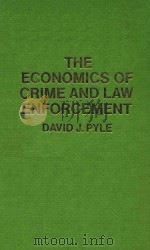《CRIMINAL5DETECTION AND CHE PSYCHOLGY OF CRIME》
| 作者 | 编者 |
|---|---|
| 出版 | ASHGATE DARTMOUTH |
| 参考页数 | 539 |
| 出版时间 | 1997(求助前请核对) 目录预览 |
| ISBN号 | 1855214547 — 求助条款 |
| PDF编号 | 812921338(仅供预览,未存储实际文件) |
| 求助格式 | 扫描PDF(若分多册发行,每次仅能受理1册) |
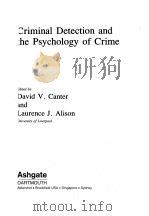
1'The Destruction of Bel' (1970), The New English Bible with the Apocrypha, 22 verses, Oxford University Press and Cambridge University Press, pp. 206--7.1
PART Ⅰ THE INVESTIGATION OF CRIME5
2Hans Gross (1962), 'Certain Qualities Essential to an Investigator', in Criminal Investigation: A Practical Textbook for Magistrates, Police Officers and Lawyers, London: Sweet and Maxwell, pp. 15-19.5
3 'Duties of the Police in the Investigation of Crimes and Offences - Obtaining of Evidence (Part Ⅰ and Part Ⅱ, from The Report of the Royal Commission on Police Powers and Procedures 1929, London: The Home Office, pp. 22-41.11
4 Verl Franz and David M. Jones (1987), 'Perceptions of Organizaional Performance in Suburban Police Departments: A Critique of the Military Model', Journal of Police Science and Administration, 15, pp. 153-61.31
5 Robert P. Delprino and Charles Balm (1988), 'National Survey of the Extent and Nature of Psychological Services in Police Departments', Professional Psychology: Research and Practice, 19, pp. 421-5.41
PART ⅡPSYCHOLOGICAL AUTOPSY49
6 Bruce W. Ebert (1987), 'Guide to Conducting a Psychological Autopsy', Professional Psychology: Research and Practice, 18, pp. 52-6.49
7 Norman Poythress, Randy K. Otto, Jack Darkes and Laura Starr (1993), 'APA's Expert Panel in the Congressional Review of the USS Iowa Incident', American Psychologist, 48, pp. 8-15.55
PART ⅢINVESTIGATIVE INTERVIEWING65
8 Ronald P. Fisher, R. Edward Geiselman, David S. Raymond, Lynn M. Jurkevich and Monica L. Warhaftig (1987), 'Enhancing Enhanced Eyewitness Memory: Refining the Cognitive Interview', Journal of Police Science and Administration, 15, pp. 291-7.65
9 Eric Shepherd (1991), 'Ethical Interviewing', in Eric Shepherd (ed.), Criminological and Legal Psychology, 18, pp. 46-56.73
10 Steven Greer (1995), 'Towards a Sociological Model of the Police Informant', British Journal of Sociology, 46, pp. 509-27.85
PART ⅣDETECTING DECEPTION107
11 David B. BuUer and R. Kelly Aune (1987), 'Nonverbal Cues to Deception Among Intimates, Friends, and Strangers', Journal of Nonverbal Behavior, 11, pp. 269-90.107
12 Paul Ekman and Manreen O'Sullivan (t991), 'Who Can Catch a Liar?', American Psychologist, 46, pp. 913-20.129
13 Frank Horvath, Brian Jayne and Joseph Buckley (1994), 'Differentiation of Truthful and Deceptive Criminal Suspects in Behavior Analysis Interviews', Journal of Forensic Sciences, 39, pp. 793-807.137
14 Gunter K6hnken (1987), 'Training Police Officers to Detect Deceptive Eyewimess Statements: Does it Work?', Social Behaviour, 2, pp. 1-17.153
PART ⅣEVALUATING TESTIMONY173
15 Gisli H. Gudjonsson and James A.C. MacKeith (1988), 'Retracted Confessions: Legal, Psychological and Psychiatric Aspects', Medical Science Law, 28, pp. 187-94.173
16 David C. Raskin and Phillip W. Esplin (1991), 'Statement Validity Assessment: Interview Procedures and Content Analysis of Children's S tatements of Sexual Abuse', Behavioral Assessment, 13, pp. 265-91.181
17 David Canter (1992), 'An Evaluation of the "Cusum" Stylistic Analysis of Confessions', Expert Evidence, 1, pp. 93-9.209
PART ⅥDELINQUENTS' CHARACTERISTICS219
18 Cyril Burt (1944), 'Conclusion', in The Young Delinquent, London: University of London Press, pp. 599-613.219
19 John Bowlby (1949), 'Conclusion and Summary', in Forty-Four Juvenile Thieves: Their Characters and Home-Life, London: Bailliere, Tindall and Cox, pp. 53-6.235
20 Robert J. Bursik, Jr. (1980), 'The Dynamics of Specialization in Juvenile Offenses', Social Forces, 58, pp. 851-64.239
PART ⅦTYPOLOGIES OF CRIMINAL255
21 F. Ivan Nye and James F. Short, Jr. (1957), 'Scaling Delinquent Behavior', American Sociological Review, 22, pp. 326-31.255
22 John Finley Scott (1959), 'Two Dimensions of Delinquent Behavior', American Sociological Review, 24, pp. 240-43. 261
23 Herbert C. Quay and LawrencE Blumen (1963), 'Dimensions of Delinquent Behavior', Journal of Social Psychology, 61, pp. 273-7.265
24 Don C. Gibbons (1975), 'Offender Typologies - Two Decades Later', British Journal of Criminology, 15, pp. 140-56.271
PART ⅧPROPERTY CRIME291
25 Edward J. Green, Carl E. Booth and Michael D. Biderman (1976), 'Cluster Analysis of Burglary M/Os', Journal of Police Science and Administration, 4, pp. 382-8.291
26 Dermot Walsh (1980), 'Burglars: Characteristics of Offenders', in Dermot Walsh, Break-lns: Burglary from Private Houses, London: Constable, pp. 57-65, 188-9.299
27 David J. Icove and M.H. (Jim) Estepp (1987), 'Motive-Based Offender Profiles of Arson and Fire-Related Crimes', FBI Law Enforcement Bulletin, 56, pp. 17-23.311
28 Bill McCarthy and John Hagan (1995), 'Getting into Street Crime: The Structure and Process of Criminal Embeddedness', Social Science Research, 24, pp. 63-95.319
29 Michael Clarke (1989), 'Insurance Fraud', British Journal of Criminology, 29, pp. 1-20.353
PART Ⅸ VIOLENT CRIME375
30 Smart Palmer (1960), 'Psychological Frustration - A Comparison ofMurderers and Their Brothers', in Marvin E. Wolfgang (ed.) (1967), Studies in Homicide, New York: Harper and Row, pp. 134-55.375
31 Floyd Feeney (1986), 'Robbers as Decision-Makers' in Derek B. Cornish and Ronald V. Clarke (eds), The Reasoning Criminal: Rational Choice Perspectives on Offending, New York: Springer-Vedag, pp. 53-71.397
32 David Canter and Rupert Heritage (1990), 'A Multivariate Model of Sexual Offence Behaviour: Developments in "Offender Profiling".I', Journal of Forensic Psychiatry, 1, pp. 185-212.417
PART ⅩINFERRING OFFENDER'S FROM OFFENCE CHARACTERISTICS441
33 Theodore H. Blau (1994), 'Psychological Profiling', in Theodore H. Blau, Psychological Services for Law Enforcement, New York: John Wiley and Sons, pp. 261-74.441
34 Malcolm K. Sparrow (1991), 'The Application of Network Analysis to Criminal Intelligence: An Assessment of the Prospects', Social Networks, 13, pp. 251-74.461
35 David Canter (1995), 'Psychology of Offender Profiling', in Ray Bull and David Carson (eds), Handbook of Psychology in Legal Contexts, Chichester: John Wiley and Sons, pp. 343-55.485
36 David Canter and Paul Larkin (1993), 'The Environmental Range of Serial Rapists', Journal of Environmental Psychology, 13, pp. 63-9.499
37 D. Kim Rossmo (1995), 'Place, Space, and Police Investigations: Hunting Serial Violent Criminals', in John E. Eck and David Weisburd (eds), Crime and Place, Mousey, NY: Criminal Justice Press, pp. 217-35.507
38 Richard Wiseman, Donald West and Roy Stemman (1996), 'Psychic Crime De tectives: A New Test for Measuring Their Successes and Failures', Skeptical Inquirer, 20, pp. 38--40, 58.527
39 Raymond Chandler (1959), quotation from The Long Good-Bye, London: Penguin Books, pp. 275-6.531
Name Index533
1997《CRIMINAL5DETECTION AND CHE PSYCHOLGY OF CRIME》由于是年代较久的资料都绝版了,几乎不可能购买到实物。如果大家为了学习确实需要,可向博主求助其电子版PDF文件(由 1997 ASHGATE DARTMOUTH 出版的版本) 。对合法合规的求助,我会当即受理并将下载地址发送给你。
高度相关资料
-

- ENCYCLOPEDIA OF CRIME AND JUSTICE VOLUME 2
- 1983 THE FREE PRESS
-
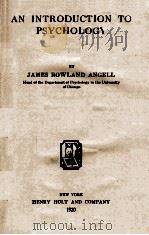
- AN INTRODUCTION TO PSYCHOLGY
- 1920 HENRY HOLT AND COMPANY
-
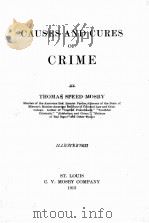
- CAUSES AND CURES OF CRIME
- 1913 C.V. MOSBY COMPANY
-
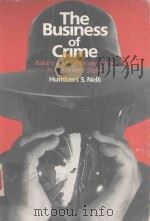
- THE BUSINESS OF CRIME ITALIANS AND SYNDICATE CRIME IN THE UNITED STAES
- 1976 THE UNIVERSITY OF CHICAGO PRESS
-

- NECEH
- 1953 TOCYNAPCTBEHHOE
-
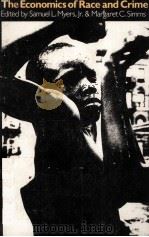
- THE ECONOMIES OF RACE AND CRIME
- 1988 TRANSACTION BOOKS
-
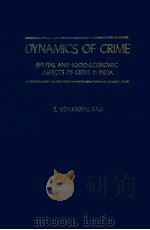
- DYNAMICS OF CRIME SPATIAL AND SOCIO-ECONOMIC ASPECTS OF CRIME IN INDIA
- 1981 INDIAN INSTITUTE OF PUBLIC ADMINISTRATION
-

- CRIME AND THE POLITICS OF HYSTERIA
- 1995 TIMES BOOKS
-
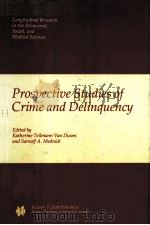
- PROSPECTIVE STUDIES OF CRIME AND DELIQUENCY
- 1983 KLUWER-NIJHOFF PUBLISHING
-
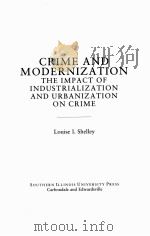
- CRIME AND MODERNIZATION THE IMPACT OF INDUSTRIALIZATION AND URBANIZATION ON CRIME
- 1981 SOUTHERN ILLINOIS UNIVERSITY PRESS
-

- ENCYCLOPEDIA OF CRIME AND JUSTICE VOLUME 4
- 1983 THE FREE PRESS
-

- ENCYCLOPEDIA OF CRIME AND JUSTICE VOLUME 3
- 1983 THE FREE PRESS
提示:百度云已更名为百度网盘(百度盘),天翼云盘、微盘下载地址……暂未提供。➥ PDF文字可复制化或转WORD
